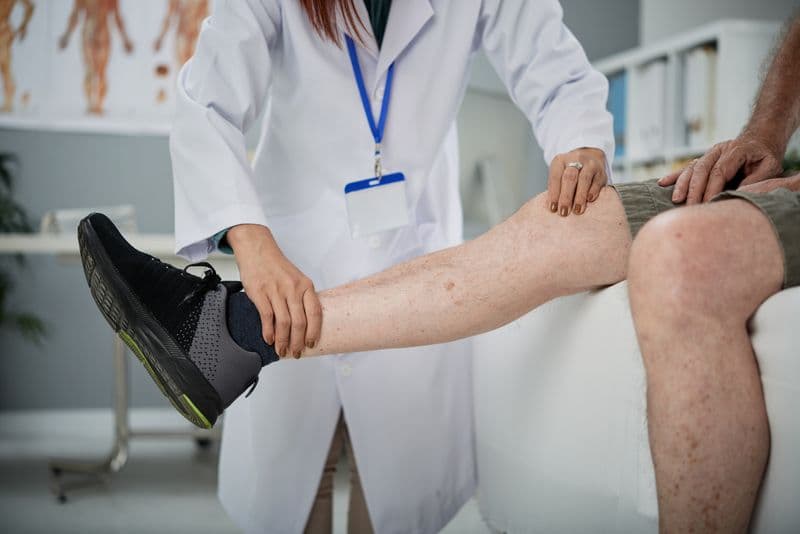
ChondroFiller vs the Rest: The Evidence, Explained
When joint pain flares, the menu of treatments can feel confusing: injections, drilling, cell therapy, grafts — what truly helps the cartilage surface recover? This guide distils the science behind ChondroFiller and sets it alongside familiar options. It’s the approach we take at London Cartilage Clinic with Prof. Paul Lee: clear choices, transparent evidence, and a plan to protect your joint for the long term.
Cartilage damage 101
Articular cartilage is the ultra-smooth lining that lets your joint glide. It has no blood supply, so once a patch is damaged, it doesn’t “scab over” like skin. Left to it, small focal defects tend to enlarge and can nudge the joint towards arthritis. Modern care tries to restore a smooth, durable surface, ideally with hyaline-like tissue rather than fibrous scar — and to do this early enough to change the trajectory of the joint.
How ChondroFiller works
ChondroFiller is a two-chamber system containing purified type-I collagen and a neutralising buffer. As the contents mix at the tip of the applicator, the liquid flows to fill the defect and then gels in situ within minutes. The gel adheres to the surrounding tissue without sutures or extra glue, but only if the surface is properly dried and the joint positioned so gravity works in your favour — small details that make a big difference in expert hands.
The biology is elegant: the acellular collagen matrix acts as a homing signal, drawing in your own progenitor cells from the synovium and marrow, which then settle in the scaffold and mature into cartilage-making chondrocytes. Over 1–2 years the implant resorbs and is replaced by your tissue, aiming for hyaline-like architecture. This “one-step” logic avoids the complexity, cost and morbidity of two-stage cell harvest/implant procedures.
On safety, the post-market record is reassuring: more than 19,000 units supplied since 2013 with no serious device-related incidents recorded and a very low overall complaint rate (~0.06%).
What the research shows
Knee: Across multiple cohorts, International Knee Documentation Committee (IKDC) scores climb by ~30 points over 12–36 months — comfortably above the threshold considered “clinically important”. MRI assessments (MOCART) commonly land in the 80s, signalling excellent defect fill and integration.
Hip: Modified Harris Hip Score (mHHS) improves by ~33 points with pain dropping by ~6 on a 10-point scale at ~2 years, supported by high MOCART values — impressive for a deep, high-load joint.
Ankle: Functional health scores (e.g., SF-36) improve through 6–36 months; prospective series report steady gains without device-related complications.
Real-world satisfaction: In earlier retrospective work on knees and ankles, around 80% of patients rated outcomes good/very good and no device-linked complications were seen — a helpful dose of everyday pragmatism alongside formal trials.
How it compares to other treatments
Hyaluronic acid (HA) injections: Think of HA as a lubricant. It can ease symptoms for months but doesn’t rebuild the damaged surface. ChondroFiller is structurally different — it’s a scaffold implant intended to fill and support true repair.
Microfracture / AMIC: Microfracture stimulates a marrow clot; AMIC adds a collagen membrane. Both can help, especially in small defects, but tend to form more fibrous cartilage, and durability can tail off in the mid- to long-term. ChondroFiller avoids deliberate breaching of the subchondral plate, aims for hyaline-like regeneration, and is performed in a single step. Choice depends on defect size, site and bone quality — the context Prof. Lee weighs during your consult.
ACI / MACI (cell-based): These two-stage procedures can suit larger or complex lesions and have strong pedigrees, but they require harvesting cartilage, lab expansion, and a second operation — with cost and donor-site morbidity to consider. ChondroFiller provides comparable functional improvements in many focal defects, with simpler logistics and very strong safety; where a defect is very large or multilayered, LCC may step up to Liquid Cartilage™ — combining ChondroFiller with your own signalling cells in a single sitting.
OATS / osteochondral grafts: Effective for select cases, but graft-harvest morbidity and surface matching can be challenges. ChondroFiller avoids graft harvest and can be repeated or combined with other techniques if needed.
The London Cartilage Clinic pathway with Prof. Paul Lee
At London Cartilage Clinic, we start with a short discovery call and targeted imaging to classify the defect precisely. Prof. Paul Lee then recommends one of three routes:
- ChondroFiller Injection — outpatient, image-guided delivery for small joints or accessible defects; minimal downtime.
- Keyhole placement — arthroscopic preparation and direct fill under vision for larger or complex lesions.
- Liquid Cartilage™ — London Cartilage Clinic's proprietary co-delivery of ChondroFiller with your own medicinal signalling cells for bigger, more demanding defects — inspired by ACI/MACI principles but completed in one session.
Whichever route you take, rehab is structured and pragmatic, with progress markers at six weeks, three months and beyond. The aim isn’t just a better scan; it’s smoother stairs, painless walks, and a confident jog — all while keeping your own joint. If that sounds like your goal, book a consultation on Harley Street and we’ll plan it together.

